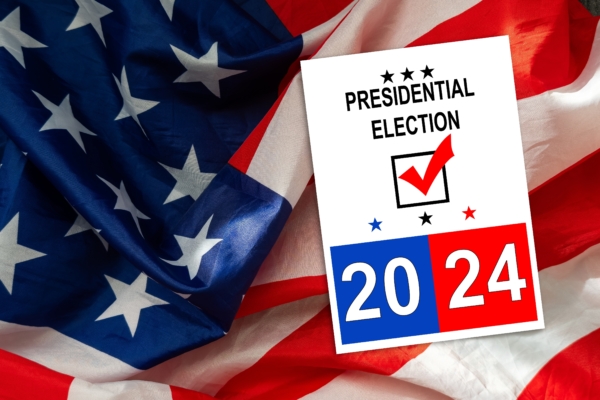With less than 50 days until the US election day, different polls have led to mixed reactions among voters from different camps regarding the conclusions drawn for the two presidential candidates. The election landscape has undergone significant changes since President Biden abandoned his re-election bid in July due to a continuous decline in his approval ratings.
Last week, Vice President Harris and former President Trump engaged in their first and only debate, where Harris seemed to have a slight uptick in her polling numbers.
According to the latest national average poll conducted by “Congress Hill Report” / “DDHQ” on Thursday, September 18th, Vice President Harris is temporarily leading former President Trump by 3.7 percentage points with a support rate of 49.7%. This marks an increase of about 0.5 percentage points compared to her support on the day of the debate with Trump on September 10th.
Furthermore, some recent polls indicate a more significant lead for Harris. A survey conducted by Morning Consult post-debate (September 14th to 16th) showed Harris leading by 6 percentage points with a support rate of 51%.
Additionally, polls conducted by Big Village (September 12th to 16th) and Monmouth University (September 11th to 15th) respectively showed Harris leading by 5 percentage points.
The Monmouth University poll indicated that Trump holds an advantage on economic and immigration issues, while Harris is favored on leadership and handling abortion matters, showcasing a noticeable gender gap on these key issues.
It is worth noting that since the Harris-Trump debate, prominent polls in key swing states that will determine the election outcome have significantly decreased.
In Pennsylvania, a joint poll conducted this week by “USA Today” / Suffolk University showed Harris leading by 3 percentage points—a positive sign for her in this crucial swing state with 19 electoral votes.
However, following the first Harris-Trump presidential debate, a poll by Insider Advantage on September 14th to 15th in Pennsylvania indicated Trump leading by 2 percentage points with a support rate of 50%.
Meanwhile, in Wisconsin, the Insider Advantage poll on September 11th to 12th showed Harris leading by 2 percentage points, surpassing Trump’s previous 1-point lead.
Currently, polls have not taken into account the impact of Trump’s second assassination attempt on public opinion.
After the second attempted assassination on Trump, he did not pause and continued with intensive campaign events in various states.
On Sunday, September 15th, a Secret Service agent at Trump’s golf club in West Palm Beach, Florida, discovered a perpetrator, Ryan Wesley Routh, with a gun barrel protruding from a bush towards the golf course where Trump was only about 400 yards away. Ryan Wesley Routh was later arrested and charged with firearm offenses.
This attempted assassination incident may potentially garner more support for Trump and strengthen the determination of Republican voters to back him.
Following the weekend event, Trump almost immediately attributed it to the remarks of Harris and Biden, stating to Fox News, “Their comments led to me being shot at (threatened).”
However, the impact of this action on undecided voters is yet to be determined.
Harris’ performance in the debate may have helped her, and polling indicates a significant lead for her nationwide.
However, it is important to note that first, the dynamics of the Electoral College mean that the Democratic presidential candidate must secure a significant lead in the popular vote to truly win the White House.
In this century, Democrats have won the popular vote twice but lost the election. Once in 2000 with Al Gore, and in 2016 with Hillary Clinton.
Renowned statistician Nate Silver published an analysis on his Silver Bulletin, stating that Harris appeared to have a rise in national polls post-debate.
But Silver also cautioned that according to his predictions, “Harris has nearly a 25% chance of winning in the popular vote but losing in the Electoral College.”
Additionally, Trump’s performance in the previous two presidential elections has surpassed polling results. For example, in Wisconsin, “RealClearPolitics” underestimated Trump’s actual vote share by approximately 7 percentage points in 2016 and by about 5 percentage points in 2020.

